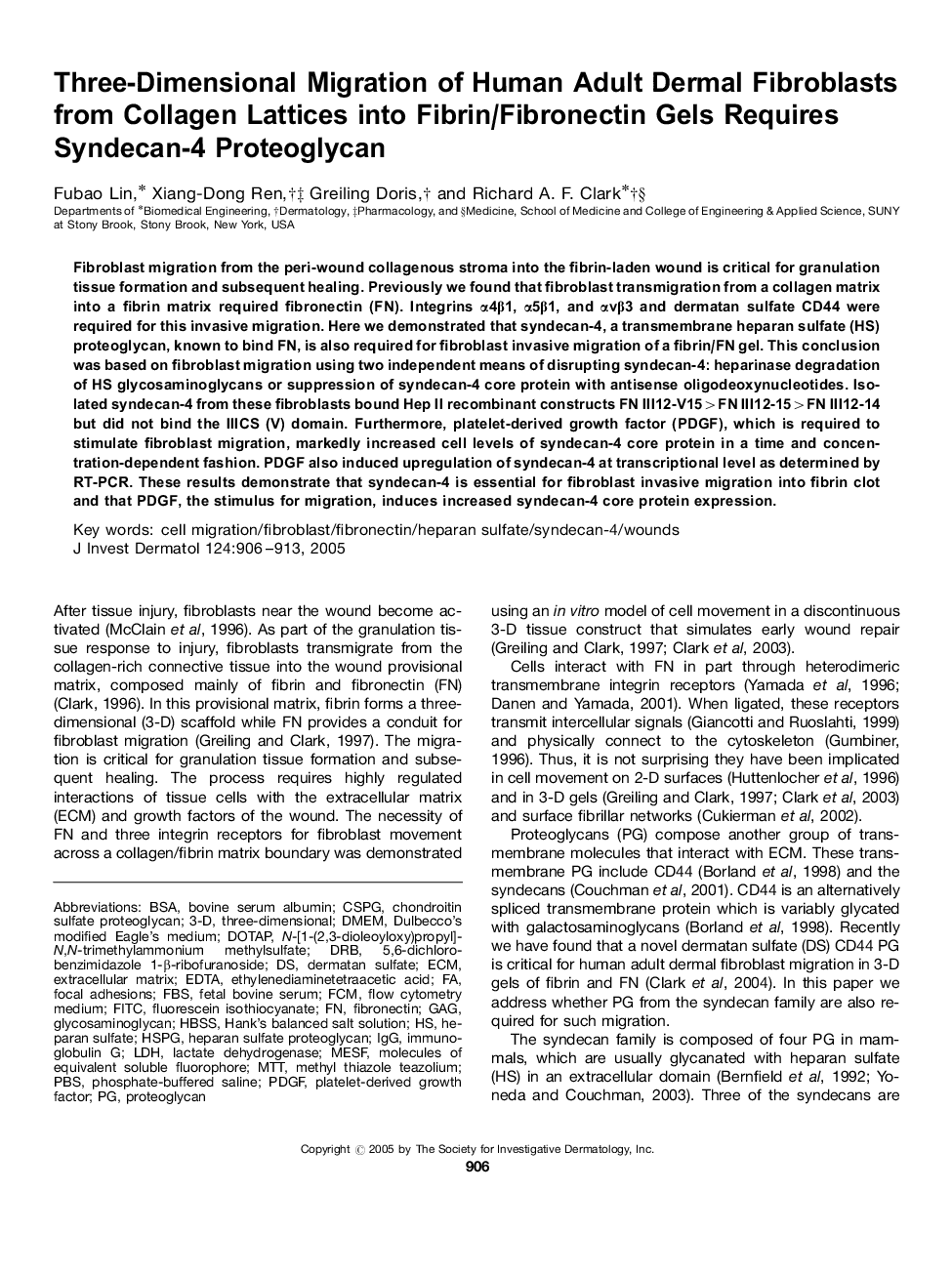| Article ID | Journal | Published Year | Pages | File Type |
|---|---|---|---|---|
| 9231163 | Journal of Investigative Dermatology | 2005 | 8 Pages |
Abstract
Fibroblast migration from the peri-wound collagenous stroma into the fibrin-laden wound is critical for granulation tissue formation and subsequent healing. Previously we found that fibroblast transmigration from a collagen matrix into a fibrin matrix required fibronectin (FN). Integrins α4β1, α5β1, and αvβ3 and dermatan sulfate CD44 were required for this invasive migration. Here we demonstrated that syndecan-4, a transmembrane heparan sulfate (HS) proteoglycan, known to bind FN, is also required for fibroblast invasive migration of a fibrin/FN gel. This conclusion was based on fibroblast migration using two independent means of disrupting syndecan-4: heparinase degradation of HS glycosaminoglycans or suppression of syndecan-4 core protein with antisense oligodeoxynucleotides. Isolated syndecan-4 from these fibroblasts bound Hep II recombinant constructs FN III12-V15>FN III12-15>FN III12-14 but did not bind the IIICS (V) domain. Furthermore, platelet-derived growth factor (PDGF), which is required to stimulate fibroblast migration, markedly increased cell levels of syndecan-4 core protein in a time and concentration-dependent fashion. PDGF also induced upregulation of syndecan-4 at transcriptional level as determined by RT-PCR. These results demonstrate that syndecan-4 is essential for fibroblast invasive migration into fibrin clot and that PDGF, the stimulus for migration, induces increased syndecan-4 core protein expression.
Related Topics
Health Sciences
Medicine and Dentistry
Dermatology
Authors
Fubao Lin, Xiang-Dong Ren, Greiling Doris, Richard A.F. Clark,
